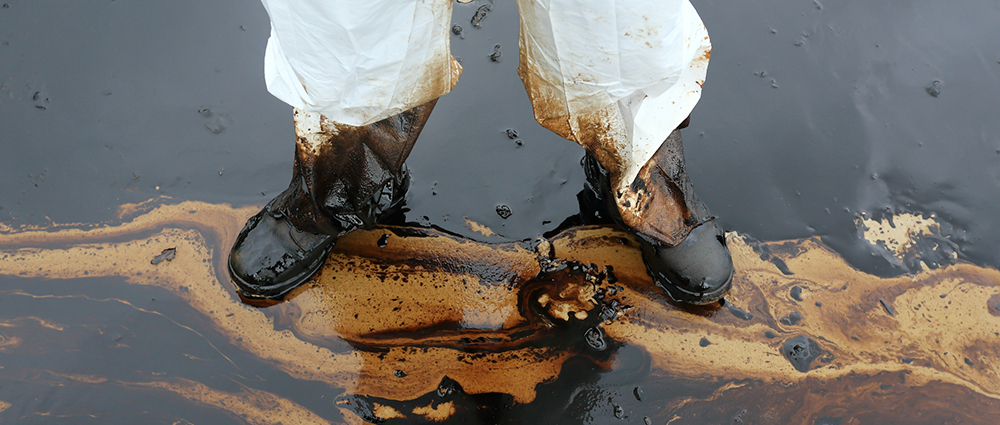How Your Business Can Respond to an Environmental Accident

Environmental Accident
18th century English poet Alexander Pope wrote in An Essay on Criticism that, “to err is human.” When we combine that seemingly universal truth with potentially harmful substances and heavy machinery, a simple mistake can be not only dangerous, but also crippling to a business in terms of repairs and mitigation. A spectrum of environmental accidents happen around the world every year and require the rapid and skilled efforts of management and mitigation teams from both governmental and non-governmental organizations. The truth is, an environmental accident with the potential to impact the environment happen across all industries, and avoiding them entirely is always the ultimate goal. But when an incident occurs, whether it be the result of human error, negligence, a natural disaster or a technological failure, how do you respond as an individual and as an organization? What steps do you take to handle the situation and who do you call for support? In this article we explore the steps that your company can take in the event of an environmental accident or emergency.
Common Environmental Accident Causes
Not all environmental accidents are the result of human error or negligence. Natural disasters such as an earthquake, tsunami or hurricane can massively impact industrial infrastructure and operations, technology can fail and in some cases, even our best, most well intended efforts can fall short. For example, in the petroleum industry, tanks historically offered single-wall containment, employing far more archaic maintenance practices and people had a less well-rounded understanding of the environmental impact of certain substances entering our oceans, drinking water, soil and air.
The Evolution of Technology and Regulations
Since then, tank technology and regulations have evolved significantly, with double-walled containment and sensors that alert us when primary containment has been breached and when there is shrinkage in inventory, suggesting either theft or some kind of leakage. A modern day underground storage tank maintenance fee was also instituted within the state of California as a result of our best efforts to offset accidents not being sufficient. The fee is collected from owners of underground storage tanks as per the California Department of Tax and Fee Administration, in cooperation with the State Water Resources Control Board, and was created to provide revenue for the Underground Tank Storage Cleanup Fund. The UST Fund created a way of maintaining financial responsibility in the case of a petroleum spill or leaking tank. It provides reimbursement to businesses for expenses associated with “the cleanup of leaking USTs… (and) to abate emergency situations or to cleanup abandoned sites that pose a threat to human health, safety, and the environment, as a result of a UST petroleum release.”
Prevention and Response Time
With most environmental accidents, prevention is the best line of defense. Responsible planning, maintenance and the implementation of preventative measures allows for the operations and logistics of most facets of industry to run smoothly. But when an incident occurs, response time is the most critical element, and educating your team on how to respond effectively, efficiently and safely is highly important.
- Develop and practice an Emergency Incident Response Procedure that has everyone on the same page if and when something happens.
- Know the location of all critical system components such as shutoff valves and switches.
- Post a 24-hour Personal Emergency Response System (PERS) list with key internal contacts, as well as external environmental mitigation and cleanup organizations within your geographical region.
- Contact an environmental response organization to assess potential impact, isolate the situation and to develop a cleanup and remediation plan.
Environmental Organizations
Whether managing the impact of contaminant releases from an accident or performing ongoing monitoring for the storage and usage integrity of petroleum or industrial agents, environmental disaster response organizations such as the U.S. Nuclear Regulatory Commission (NRC), the Environmental Protection Agency (EPA), the National Incident Management System (NIMS) and local and regional non-governmental companies are critical when it comes to protecting our health and natural resources.
The Bottom Line
Accidents happen. There’s no way to fully control for the absolute certainty of an accident-free world, so the next best thing is to be proactive around prevention and prepared for when an incident arises. To our advantage, we have the ability to learn from the past and from the mistakes of others, and we have resources and services available that allow us to respond quickly, efficiently and safely. By developing robust procedures, educating and training your team, having the appropriate emergency contact information easily accessible and by fostering alliances with environmental organizations, you can set your business up to win in the case of an environmental accident.
Contact an SCL Consultant Today
In a wide range of industrial sectors, SCL is committed to being the number one logistics and solutions provider for the products that protect and optimize the machines that keep our country moving. We pride ourselves on remaining at the forefront of industry trends and technological innovations, and as the market continues to evolve, we are committed to providing extensive product and industry knowledge and total performance satisfaction for our customers. For information on how we can assist your fleet in choosing the optimal products at a competitive price, contact an SCL consultant today.
